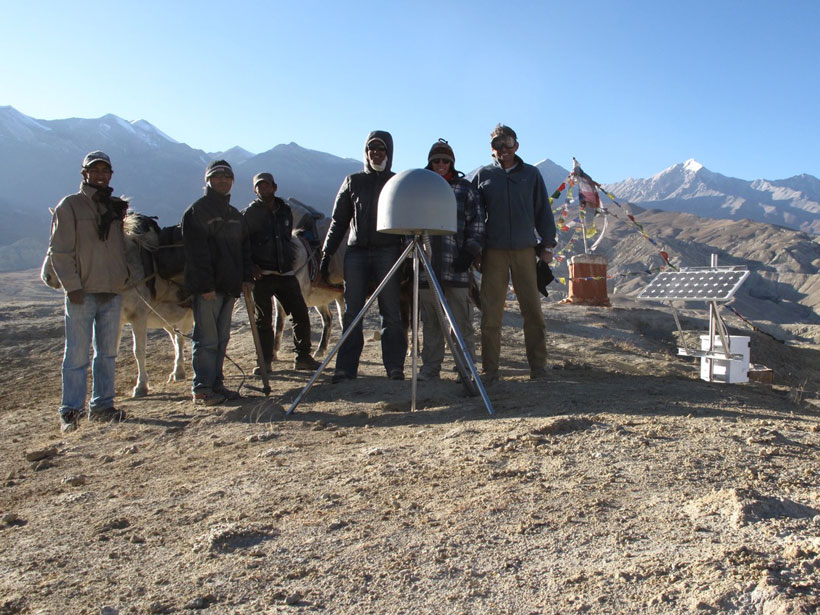As a child, Kristel Chanard loved reading books about mountaineering adventures. She often imagined herself going on expeditions through the Himalayas. But at home in the suburbs of Paris, she was a tinkerer—like her father, who enjoyed taking things apart to show his daughter how they worked.
Chanard spent her first 2 years at university studying math and science, with an eye toward becoming an engineer and building satellites. Then she realized that the students studying geology and Earth-related problems got to spend significant parts of their studies outside. “Geology is what got me out into the field,” she said.
Chanard switched her focus to the geosciences, and within a month she was hiking the French Alps, exhausted but loving every minute of the fieldwork. Soon she was even working on data from the Himalayas, after she landed an internship at the California Institute of Technology investigating the Asian monsoon cycle with Jean-Philippe Avouac.

When she completed her bachelor’s in physics at École Normale Supérieure in Paris, Chanard planned to take some time off. Avouac, however, needed a field engineer in Nepal. Chanard spent a year trekking through the Himalayas—by plane, by horse, and on foot—installing GPS stations to track the movement of tectonic plates.
Then Chanard returned to Paris to pursue her master’s and switched her focus from observational fieldwork to experimental work, creating earthquakes in the lab. She realized that to do the kind of research she was interested in—understanding how the solid Earth and climate interact—she would need both approaches.
“To understand some of the questions that we have in Earth science, you need to see it with different perspectives,” she said.
Now Chanard is a research scientist in geophysics and geodesy at the Institut de Physique du Globe de Paris and the Institut Géographique National in Paris. She spends her free time in the mountains, hiking and climbing, drawing inspiration for the research questions she wants to ask next, and thinking about how to answer them. “I have the coolest job,” she said.
Keep up with Chanard’s research and adventures by following her website (kristelchanard.weebly.com) and her tweets (@KristelChanard).
This profile is part of a special series in our September 2021 issue on science careers.
—Kate Wheeling, Science Writer
Citation:
Wheeling, K. (2021), Kristel Chanard: Trekking and tracking mountains, Eos, 102, https://doi.org/10.1029/2021EO162177. Published on 24 August 2021.
Text © 2021. The authors. CC BY-NC-ND 3.0
Except where otherwise noted, images are subject to copyright. Any reuse without express permission from the copyright owner is prohibited.


